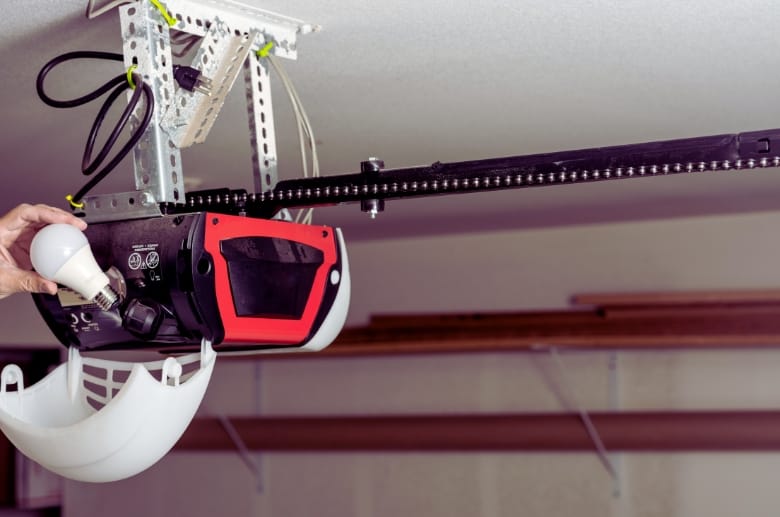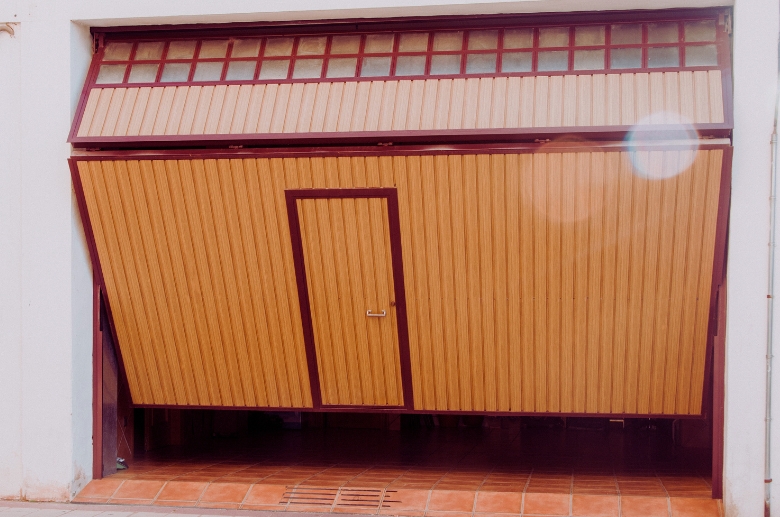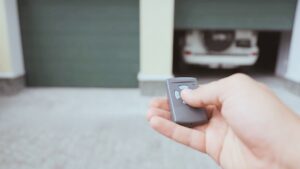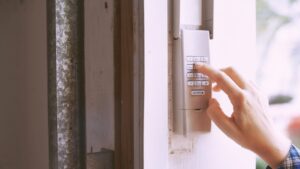As a homeowner, the safety of your home and your family is surely one of your top priorities.
When we talk about home safety, the first thing that comes to mind is your home’s entryways. One of your home’s entryways is your garage door.
Not only does it serve as a point of entrance and exit, but it also serves as storage for your car and other valuables. While it is an essential aspect of your home, it can also be a potential hazard if not given proper attention.
When your garage door malfunctions, accidents may occur. There are also other dangers, such as burglars or animals entering your home. Therefore, as a homeowner, it is your responsibility to ensure that your garage door is functioning properly.
Garage Insiders will educate you on safe garage door operation, maintenance, and inspection through 13 essential garage door safety tips in this blog post.
Tip #1: Perform regular maintenance and inspections.

This tip will always be at the top of the list for most, if not all, garage experts.
One of the mistakes of many homeowners is ignoring signs of wear and tear on their garage door components and having an unbalanced garage door. This leads to further damage, resulting in unwanted accidents.
According to the U.S. Consumer Product Safety Commission (CPSC), approximately 30,000 garage door-related injuries occur annually in the United States. Garage door malfunctions were responsible for 40% of these incidents.
You can prevent these accidents from happening, plus the costly repairs that follow, by regularly inspecting and maintaining your garage doors. Taking these steps not only ensures a safe and properly functioning garage door but can also extend its life and that of its components.
Garage Insiders Tip: Create a maintenance schedule and follow it consistently. Perform a comprehensive garage door safety check at least once a year, including testing all safety features and inspecting components for wear or damage.
Connect With A Garage Expert
Connect with local experts, Compare quotes, Get the best price.
Tip #2: Learn how to use garage door safety features properly.

There are days when you’re running late to school or work, and our garage door is taking its sweet time to open, making you even more anxious as you see the clock ticking. You make a mental note to disable or bypass your garage door’s safety feature so you can quickly exit your garage the next day.
While this may be tempting, doing so can cause accidents and injuries. In fact, according to the U.S. Consumer Product Safety Commission, garage door injuries, some involving children, result in an estimated 20,000 emergency room visits annually.
To avoid adding to this number, educate yourself on how to use your garage door’s safety features properly. Always read your garage door manuals, and make sure to test your auto-reverse and photo-eye sensors monthly. Your door sensors are designed to detect objects in their path and reverse direction to prevent them from being crushed, and this is why you must test them regularly.
Tip #3: Teach children about garage door safety and establish rules.

Many garage door-related accidents involve children, and many of these are caused by kids playing unguarded and unguided with the garage door opener.
If you have a toddler, pre-schooler, or primary school child, we recommend that you set clear rules for how your garage door opener or remote control is used. Explain to them the dangers of playing near an operating door in a manner that they will understand, so they will be less likely to engage in risky behavior.
Garage Insiders Tip: When setting garage door safety guidelines, teach your kids to keep their hands and fingers clear of section joints, hinges, tracks, springs, and other door parts. Do not let them play with or use the transmitters or remote controls.
Tip #4: Ensure your garage door area is clear and safe.

Another mistake that we see a lot of homeowners make is storing items near their garage door or in their path. Not only does a cluttered garage area become an eyesore, but it can also cause difficulty operating your garage door safely.
Your car may also accidentally hit these items, causing damage to your vehicle and increasing the risk of accidents. So keep your garage door clutter-free. Avoid parking too close to your garage door, and make sure to store your belongings safely and securely in designated storage areas.
Tip #5: Hire professionals for complex repairs.

Garage Insiders do encourage homeowners to DIY only IF the repairs are minimal or the installation is not too complex. Still, some repairs are best left to the experts.
Garage doors can weigh over 400 pounds and have many intricate components, making DIY repair attempts risky and dangerous. A simple mistake may lead to a serious injury and can also result in additional repair costs down the line. Save time, money, and, most importantly, your safety by hiring professionals for complex garage door repairs.
Garage Insiders Tip: Consult a garage expert for repairs involving springs, cables, or other high-risk components.
Connect With A Garage Expert
Connect with local experts, Compare quotes, Get the best price.
Tip #6: Ensure that the garage door push button is installed five feet from the floor.

We always tell homeowners that every detail matters when it comes to garage door safety. For instance, did you know that where you position your garage door push button can have an impact on safety?
According to the International Association of Certified Home Inspectors, the push button should be installed five feet from the floor to keep it out of children’s reach. This ensures that they don’t accidentally activate your garage door, which may cause injury to themselves or others. Additionally, at this height, you can have a clear view of your garage door while you operate it. This enables you to monitor any potential issues that could arise while it’s in motion.
Tip #7: Choose a garage door and opener with built-in safety features and a good safety rating.

When choosing a garage door and opener, we always tell homeowners to choose quality over quantity. Sometimes, you may see garage door advertisements promising you’ll save a thousand dollars when you buy one. Tempting, we know. These cheap garage doors or openers may seem like a good deal, but they often lack critical safety features, and when they fail, they may result in property damage and accidents.
Yes, they might cost a bit more upfront, but investing in a safe, secure garage door with a good safety rating ensures your family and valuables are safe. Additionally, choosing a high-quality garage door and opener saves you from potential hazards, expensive repair costs, and the emotional toll of accidents in the long run.
Garage Insiders Tip: When selecting a garage door opener, look for built-in safety features such as:
- Auto-reverse mechanisms, which can prevent the door from causing injury or damage by reversing direction if it encounters an object in its path
- Manual override options in case of power failure or malfunction
- The use of sensors to detect obstacles in the path of the door improves overall safety
- Security features, such as rolling code technology and keyless entry options, prevent unauthorized access and protect your valuables.
Tip #8: Learn how to use the emergency release feature.

You try to open your garage door, but suddenly it malfunctions, or worse, there’s a power outage. First things first, do not panic. Your garage door has an emergency release feature, and this allows you to manually open the door in case of a malfunction or a power outage.
You or a family member can get trapped inside the garage if you don’t know how to use it. So, make sure every member of your household knows how to operate it. We recommend testing and practicing the release feature to ensure it works.
Tip #9: Lubricate and clean your garage door components properly.

Your garage door is a machine, and like any other machine, how smoothly it operates and how long it lasts will depend on how you take care of it. Failing to lubricate your garage door can lead to
- noisy operation
- increased stress on the motor
- shorter lifespan of its components
As garage door experts, we recommend that you lubricate your garage door at least once a year. However, if you use it on a daily basis, lubricate the moving parts every six months to prevent wear and tear and ensure smooth operation.
Garage Insiders Tip: Use a high-quality silicone-based lubricant that’s designed specifically for garage doors. Lubricate the moving parts, such as the rollers, hinges, and tracks. Avoid using heavy grease or WD-40 because these attract dust and dirt, causing more harm than good.
Tip #10: Secure your garage door.

You’re finally going on a vacation to Cancun. You dream of sipping a pina colada while you enjoy the beach views. Your peaceful thoughts are then interrupted by the realization that you have left your garage door unlocked.
According to home security company ADT Inc., 9% of burglars enter homes through garages. Don’t make the mistake of leaving your garage door unlocked or unsecured when you’re not at home. This makes it easier for intruders to access your house, leading to home break-ins and unwanted robberies.
Invest in proper security measures to secure your garage door. Keep your belongings safe by following these tips:
- Always lock your garage door from the inside.
- Duplicate a spare key to avoid locking yourself out of your garage
- Install a deadbolt lock or padlock on the inside.
- Install a security camera and motion-sensing lights.
- Make sure your garage door opener has a rolling code to prevent unauthorized access.
Tip #11: Test the safety sensors’ reversing mechanism on a monthly basis.

Don’t make the mistake of not testing the reversing mechanism of your garage door safety sensors. It’s important that you do this because this safety feature can prevent around 60%–80% of accidents from happening.
You might think, “Nah, it won’t happen to me.” But accidents happen often because people think they won’t happen to them. To ensure your garage door works safely, test the auto-reverse safety feature by placing a small object under the door, such as a roll of paper towels. Try closing your garage door. It should reverse upon contact. If it doesn’t, then it’s time to call a professional.
Garage Insiders Tip: Safety sensors should be mounted no higher than 6 inches off the ground and should stop the door from closing if the beam is broken. Conduct a test every month to ensure it works properly and keeps your home safe.
Tip #12: Ensure your garage has proper ventilation and adequate lighting.

Navigating your garage in the dark is no fun when you accidentally trip over a wrench or your car bumps into the door while backing. This is why a well-lit garage is important, and it reduces the chances of trip-and-fall accidents, which can cause injuries.
Additionally, a poorly ventilated garage can result in carbon monoxide (CO) poisoning, especially in garages with attached homes. CO poisoning is caused by inhaling fumes from engines that burn fossil fuels, such as car engines. It can cause headaches, dizziness, nausea, and, yes, even death.
Garage Insiders Tip: Install bright, energy-efficient lighting in and around your garage to improve visibility and safety. Ensure there’s proper ventilation to keep fresh air circulating throughout the garage to reduce the chances of CO poisoning from your car’s exhaust fumes.
Tip #13: Avoid leaving your garage door partially open.

It might seem harmless to leave your garage door partially open to let in the fresh air, but it actually causes more harm than you think. It leads to compromised security, increased energy bills, and health hazards.
When you leave your garage door open, it
- becomes an invitation for thieves to steal your possessions.
- increases the risk of unauthorized access to your home.
- allows pests and strays to enter your garage, where they can create nests and cause damage to your belongings. These unwanted guests can carry diseases and pose potential health hazards to your family.
- causes wear and tear on the garage door and its components, especially if you’re not using a door stopper. For example, when the garage door is closed, the opener motor is at rest, but a partially open door keeps it running, which can lead to faulty operation or motor burnout.
- increases your energy bills due to the need for air conditioning or heating to overcome the gaps between your garage door and your home’s interior.
Connect With A Garage Expert
Connect with local experts, Compare quotes, Get the best price.
Garage Door Safety Federal Requirements
As a homeowner, you need to be aware of federal laws requiring garage doors to meet specific safety standards set by the U.S. Consumer Product Safety Commission (CPSC). This means that as someone who owns or rents a home with a garage, you have a responsibility to make sure your garage door meets these standards.
- UL 325 Standard: The UL (Underwriters Laboratories) 325 is a safety standard for door, drapery, gate, louver, and window operators and systems. This standard ensures that a garage door’s electric motor meets specific guidelines for safety and performance.
- The mandatory rule (16 CFR Part 1211) primarily requires that all residential GDOs sold in the United States have an inherent reversing mechanism capable of reversing the motion of a moving garage door within 2 seconds to reduce the risk of entrapment.
- Garage door openers are also required to have a device referred to as a “30-second clock.” The 30-second clock is a backup device that reopens the door if the door cannot close completely within 30 seconds, as would be the case when a person becomes entrapped by the door. The 30-second clock is a backup to the primary, 2-second inherent entrapment system.
- Another federal requirement includes the inclusion of an emergency release, allowing homeowners to disengage the garage door opener and manually operate the door in case of a power outage or any other malfunction.
Conclusion
We rounded up these 13 garage door safety tips to help spread awareness among homeowners, and we hope this has helped you.
Always keep an eye on your garage door because accidents happen at any time, so don’t take any chances. Make sure your garage door and safety features are working properly. This keeps your home and loved ones safe. For a proper consultation, we recommend you seek help from professionals.
At Garage Insiders, we take garage safety seriously. We invite you to explore our blog posts, where you’ll find valuable insights, expert advice, and helpful resources about everything related to your garage.




